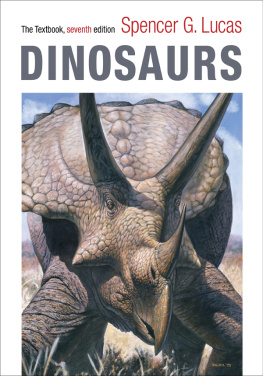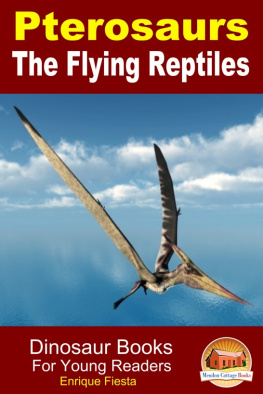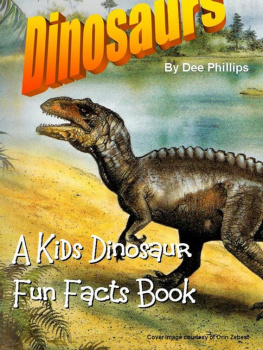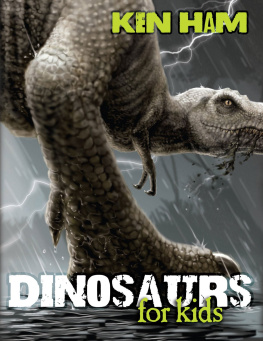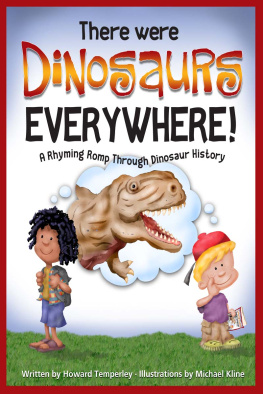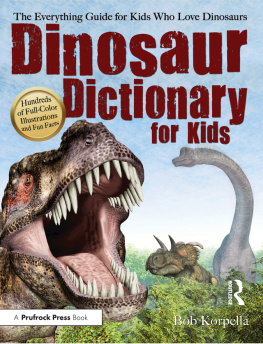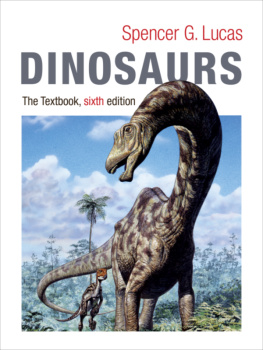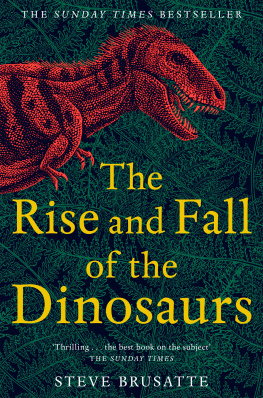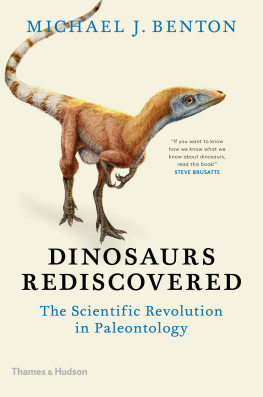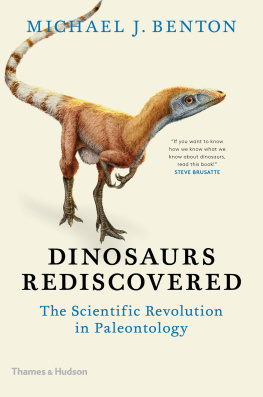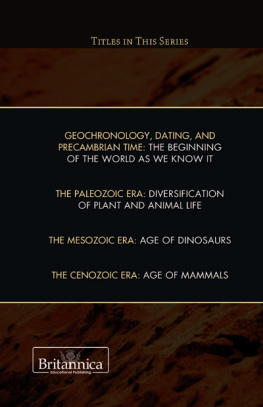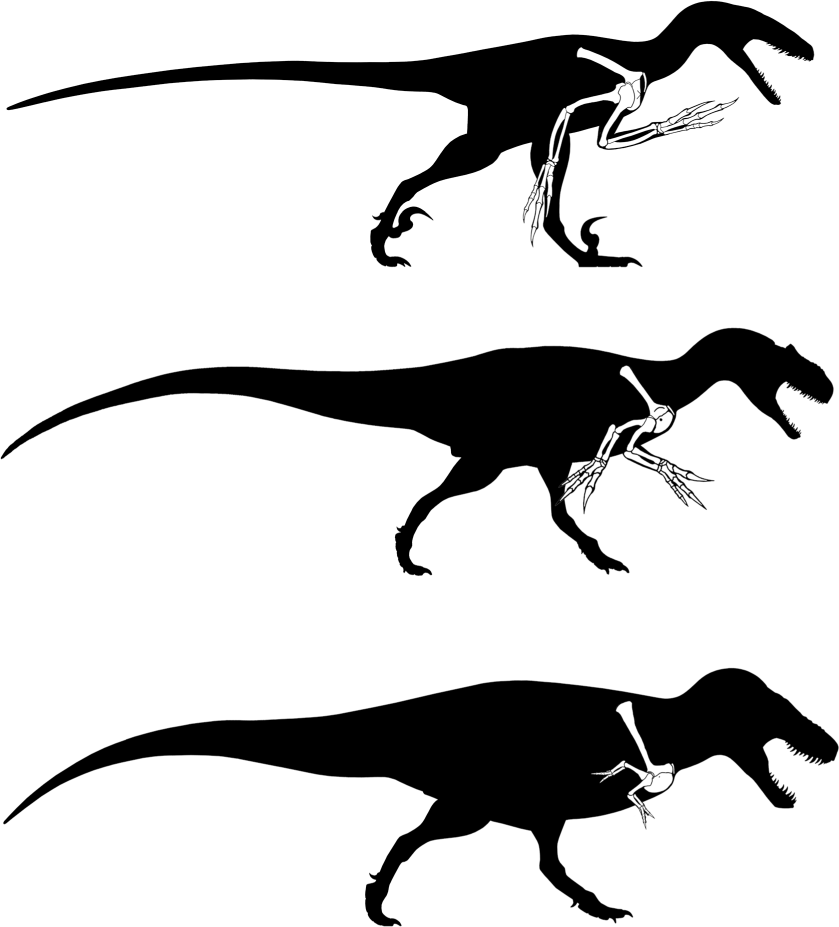Table of Contents
Dinosaurs
Columbia University Press
Publishers Since 1893
New YorkChichester, West Sussex
cup.columbia.edu
Copyright 2022 Columbia University Press
All rights reserved
EISBN 978-0-231-55627-9
Library of Congress Cataloging-in-Publication Data
Names: Lucas, Spencer G., author.
Title: Dinosaurs : the textbook / Spencer G. Lucas.
Description: Seventh edition. | New York : Columbia University Press, [2022] |
Includes bibliographical references and index.
Identifiers: LCCN 2021046541 | ISBN 9780231206006 (hardback) |
ISBN 9780231206013 (trade paperback) | ISBN 9780231556279 (ebook)
Subjects: LCSH: DinosaursTextbooks.
Classification: LCC QE861.4 .L94 2022 | DDC 567.9dc23
LC record available at https://lccn.loc.gov/2021046541
A Columbia University Press E-book.
CUP would be pleased to hear about your reading experience with this e-book at .
Cover art: Mark Hallett/Mark Hallett Paleoart
For Yami, Cocoa, and Lulu
Contents in Brief
Contents in Detail
I N the 1980s, the geology faculty at the University of New Mexico, at my suggestion, initiated an introductory-level course on dinosaurs. As the lone vertebrate paleontologist on campus, I, of course, was to teach this course. I had several years of teaching introductory geologyboth physical and historical geologyunder my belt. But now a problem faced me: no textbook existed for a dinosaur course. Furthermore, in a decade-long stint as a university studentfrom freshman to doctorateI had never taken a course on dinosaurs. Few colleagues were teaching dinosaur courses at that time, and all they could offer was a syllabus with a list of suggested readings. Not fully satisfied with their offerings, I set out to design a course and provide reading material from available sources to suit my own ideas about how to teach college freshmen and sophomores about dinosaurs.
The book I have written is for the semester-long course I have taught as it has been honed by years of experimentation and student feedback to a lean but comprehensive introduction to the dinosaurs. This book thus fulfills the needs of the many faculty teaching introductory-level dinosaur courses across the United States. My reviewers share this belief, and I hope we are right.
There is, however, a second reason I wrote this book. It represents my attempt to slog through the available morass of information and ideas about dinosaurs, some controversial, others ridiculous, to establish a firm ground of established facts and reasonable inferences. Much of what Americans think they know about dinosaurs is wrong, and some of what they are being told today in some popular books is hype. This book tries to right the wrongs and avoid the hype by going out of its way not to promote unreasonable speculation about dinosaurs. Not everything in it is above debate, but nothing here is science fiction. As such, I want this book to teach many people about dinosaurs and the science of studying dinosaurs as few other books do.
These are heady times for dinosaur science. Almost daily, new discoveries, novel methods, and innovative ideas are pushing forward the frontiers of our knowledge of dinosaurs. Americans seem to have an insatiable appetite for information on dinosaurs. This book provides a first course, and I hope it fosters an accurate understanding of the dinosaurs and a deep appreciation of dinosaur science in all who read it.
Organization
The book is divided into three parts. The first part, , covers a variety of thought-provoking topics. These chapters discuss everything from the history of the great dinosaur hunters to the extinction of the dinosaurs. The emphasis in many of the chapters is on concepts of broad applicability; in other words, concepts also relevant to subjects other than dinosaurs. Thus, for example, I believe that the history of dinosaur collecting and study can be used to tell the student much about how scientific perceptions change over time. Finally, I have included an appendix of dinosaur anatomy, a glossary, and a dinosaur dictionary for ease in understanding and using anatomical terms, identifying key information, and locating definitions.
I have strived to present a balanced review of competing ideas in controversial areas. For example, I believe the weight of evidence suggests that some dinosaurs had a higher metabolic rate than that of living ectotherms, whereas there is no evidence of such a heightened metabolic rate in other dinosaur groups. I intend to present the range of evidence on this subject and not to promote a particular point of view not justified by the evidence.
The seventh edition of this textbook updates many areas, large and small, to keep current in one of the most rapidly evolving fields of scientific discovery and research that I know of. All reference lists at the end of each chapter have been updated. This new edition also corrects as many sins of commission and omission as I could beat out of the sixth edition; there were a few!
Acknowledgments
F IRST, I want to thank Patrick Fitzgerald, who acquired this book for Columbia University Press. I also thank my current editor at Columbia University Press, Miranda Martin, for smoothly seeing the seventh edition through to completion. I also want to thank the staff at and contractors for Columbia for diverse help. I wish to extend my thanks and appreciation to the reviewers whose thoughtful comments, criticisms, and encouragement have helped tremendously in revising and improving the final draft. Several colleagues, museums, and other institutions provided photographs that add to the quality of instruction in this textbook. Their contributions are acknowledged, where appropriate, throughout the text.
Over the years, I have learned much about dinosaurs from my colleagues and students. To the rest of you who collect dinosaurs, do the research, give the talks, and write the papers, thanks for teaching me so much.
Finally, I thank my wife, Yami Lucas, for her support, encouragement, and editorial help.
Instructors Manual
Many who teach dinosaur courses are not vertebrate paleontologists, and few, if any, of the instructors have ever had the opportunity to enroll in a dinosaur course during their college-student careers. The first edition of this book was the first textbook written specifically for a dinosaur course. For these and other reasons, I have written an Instructors Manual to accompany the text.
An Instructors Manual is available for professors and teachers who adopt the text for use with students. Instructors can request a copy by sending an e-mail to .
The Instructors Manual includes a suggested syllabus along with a description of the texts organization and chapter interdependence to assist instructors in planning how best to use the text to meet the needs of their courses. The manual provides a description of the material covered in each chapter as well as suggestions for how to present the material. In the manual, I discuss what material should be emphasized and provide methods for overcoming potential difficulties. Answers to all review questions are also provided for each chapter.

